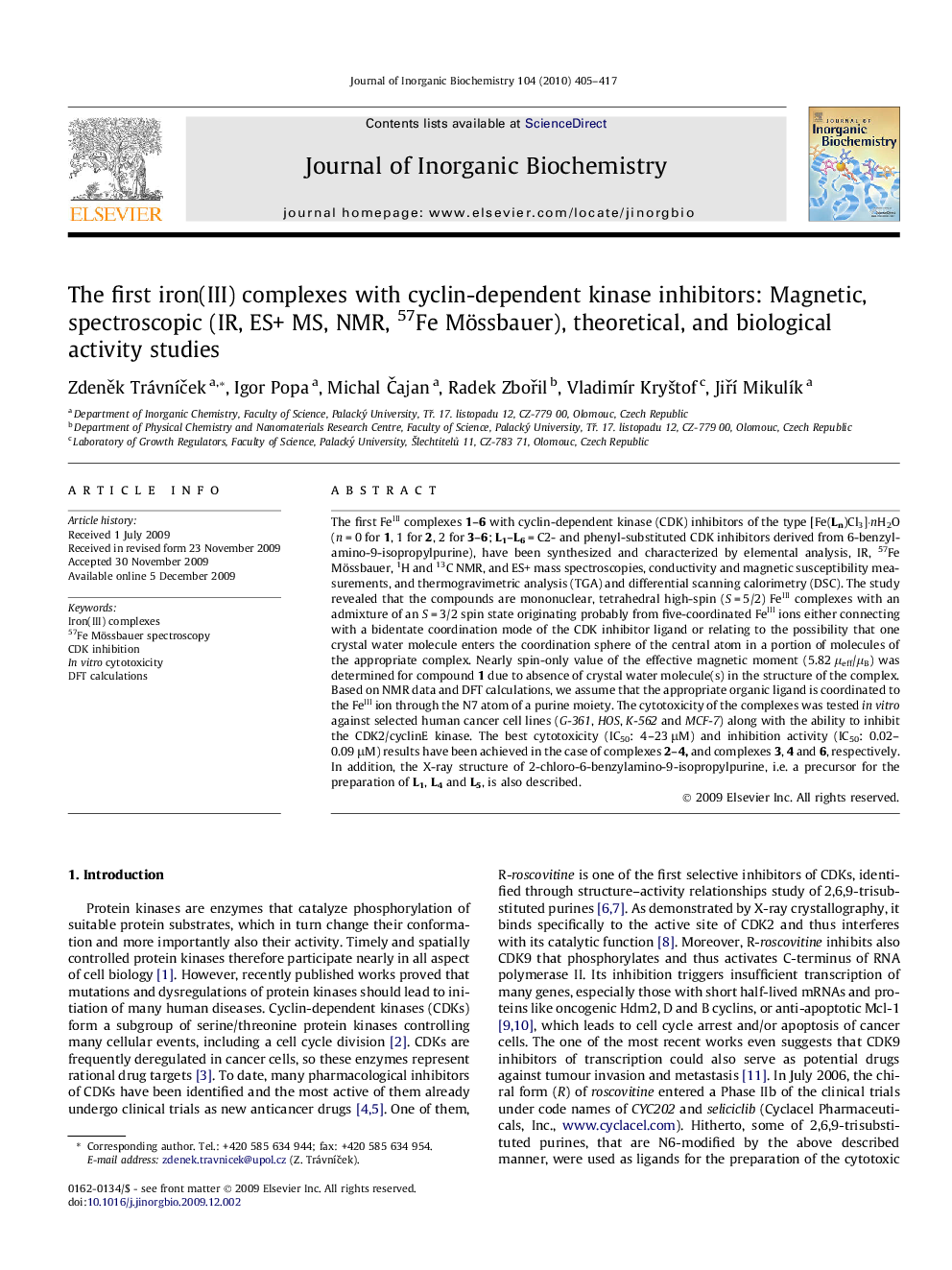| Article ID | Journal | Published Year | Pages | File Type |
|---|---|---|---|---|
| 1317985 | Journal of Inorganic Biochemistry | 2010 | 13 Pages |
The first FeIII complexes 1–6 with cyclin-dependent kinase (CDK) inhibitors of the type [Fe(Ln)Cl3]·nH2O (n = 0 for 1, 1 for 2, 2 for 3–6; L1–L6 = C2- and phenyl-substituted CDK inhibitors derived from 6-benzylamino-9-isopropylpurine), have been synthesized and characterized by elemental analysis, IR, 57Fe Mössbauer, 1H and 13C NMR, and ES+ mass spectroscopies, conductivity and magnetic susceptibility measurements, and thermogravimetric analysis (TGA) and differential scanning calorimetry (DSC). The study revealed that the compounds are mononuclear, tetrahedral high-spin (S = 5/2) FeIII complexes with an admixture of an S = 3/2 spin state originating probably from five-coordinated FeIII ions either connecting with a bidentate coordination mode of the CDK inhibitor ligand or relating to the possibility that one crystal water molecule enters the coordination sphere of the central atom in a portion of molecules of the appropriate complex. Nearly spin-only value of the effective magnetic moment (5.82 μeff/μB) was determined for compound 1 due to absence of crystal water molecule(s) in the structure of the complex. Based on NMR data and DFT calculations, we assume that the appropriate organic ligand is coordinated to the FeIII ion through the N7 atom of a purine moiety. The cytotoxicity of the complexes was tested in vitro against selected human cancer cell lines (G-361, HOS, K-562 and MCF-7) along with the ability to inhibit the CDK2/cyclinE kinase. The best cytotoxicity (IC50: 4–23 μM) and inhibition activity (IC50: 0.02–0.09 μM) results have been achieved in the case of complexes 2–4, and complexes 3, 4 and 6, respectively. In addition, the X-ray structure of 2-chloro-6-benzylamino-9-isopropylpurine, i.e. a precursor for the preparation of L1, L4 and L5, is also described.
Graphical abstractA series of the first FeIII complexes 1–6 with cyclin-dependent kinase (CDK) inhibitors of the type [Fe(Ln)Cl3]·nH2O has been synthesized and fully characterized by a variety of physical techniques. The study revealed that the compounds are mononuclear, tetrahedral high-spin (S = 5/2) FeIII complexes, with an admixture of an S = 3/2 spin state. The cytotoxicity of the complexes was tested in vitro against selected human cancer cell lines (G-361, HOS, K-562 and MCF-7) along with the ability to inhibit the CDK2/cyclinE kinase.Figure optionsDownload full-size imageDownload as PowerPoint slide
